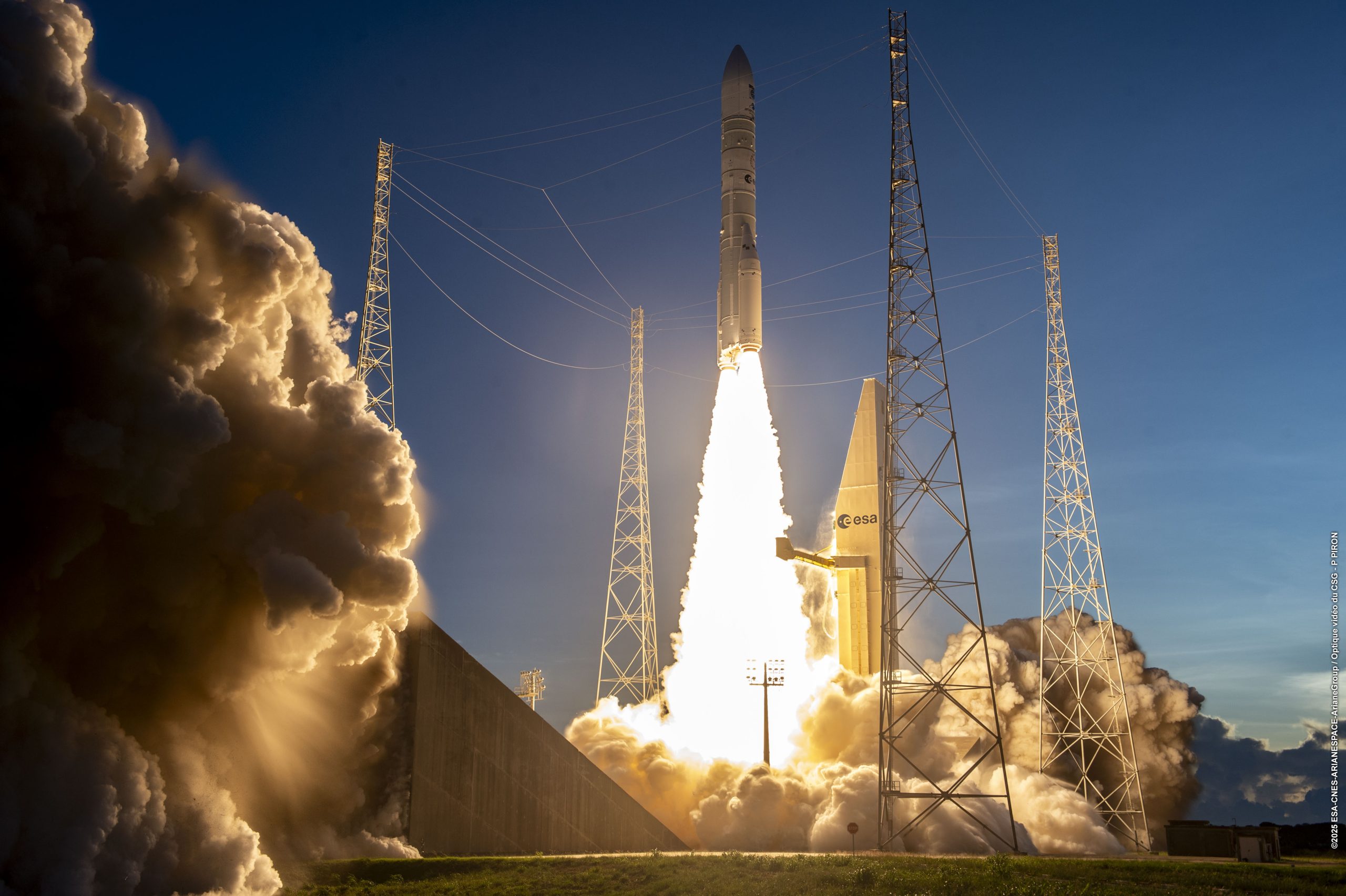With Ariane 6, Arianespace successfully launches Copernicus Sentinel-1D satellite
04.11.2025

On November 4, 2025 at 6:02 p.m. local time in Kourou, French Guiana (9:02 p.m. UTC, 10:02 p.m. CET), Ariane 6 lifted off from Europe’s Spaceport carrying the Copernicus Sentinel-1D satellite.
With this third commercial flight, Ariane 6, the European heavy-lift launcher operated by Arianespace, successfully placed Sentinel-1D into Sun-synchronous orbit (SSO) at an altitude of 693 km. Spacecraft separation occurred 34 minutes after lift-off.
David Cavaillolès, CEO of Arianespace declared: “Tonight, Arianespace has successfully launched the EU’s Copernicus Sentinel-1D satellite, on board Ariane 6. With this mission, Arianespace has now delivered seven Sentinel satellites for the emblematic Copernicus program dedicated to the environment – underscoring our commitment to using space for the benefit of life on Earth, while supporting Europe’s significant ambitions in space. We express our gratitude towards the European Commission, the European Space Agency and all our counterparts for their unique trust and collaboration.” David Cavaillolès added: “This fourth successful flight for Ariane 6 marks another significant milestone achieved together with our industrial partners, all contributing to this impressive ramp-up.”
« With the fourth successful flight in a row, Ariane 6 has proven its reliability and performance. This demonstrates the amazing work of the teams at ArianeGroup and its industrial partners. The Ariane 6 production ramp-up is now well underway, guaranteeing Europe’s sovereign access to space”

For this third commercial mission, the Ariane 6 vehicle was in the two-booster Ariane 62 configuration with a short fairing.
Ariane 6 is a program developed within the framework of the European Space Agency (ESA). As prime contractor and design authority for the launcher, ArianeGroup is responsible for development and production alongside its industrial partners. Ariane 6 is marketed and operated by Arianespace.
The Thales Alenia Space-built Sentinel-1D satellite is part of Copernicus, the Earth observation component of the European Union’s Space Programme. Copernicus is managed and funded by the European Union with a partial contribution of ESA. As the world’s most advanced Earth observation system, Copernicus provides continuous, free, and reliable Earth observation data and services to public authorities, companies and citizens around the globe. Sentinel-1D will carry advanced radar technology to provide an all-weather, day-and-night supply of imagery of the Earth’s surface, delivering data essential to monitoring sea ice, track icebergs and glaciers, subsidence, and oil spills.
The VA256 launch at a glance:
- 356th launch by Arianespace
- 4th Ariane 6 launch and 3rd commercial flight
- 5th launch operated by Arianespace from Europe’s Spaceport in 2025 (3 launches with Ariane 6 and 2 launches with Vega C)
- 10% of the satellites launched by Arianespace are Earth observation satellites
- 7th Sentinel satellite launched by Arianespace
- 53rd mission for the European Space Agency
- 109th spacecraft built by Thales Alenia Space launched by Arianespace